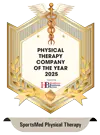This week we’re back with another post as part of our Road to Recovery series! We’re going to bring our focus onto back pain rehabilitation. We can’t stress this enough…those who sit too much are in trouble. Most likely, if your job has you sitting for most of the day, you risk getting injured, even if you exercise frequently. The problem is that humans were not meant to sit for most of the day. Our bodies are designed to be out in the wild hunting, gathering, and fighting off deadly predators. Overtime society has advanced enough to the point where this is not normally necessary, and the bodies that have been made to always be moving suffer the consequences.
How Does Sitting Too Much Affect My Back Pain Rehabilitation?
Back pain – one of the many different problems that can come up from prolonged sitting. Of course there are other ways one can injure your back such as falling or lifting incorrectly. The reason why sitting is considered the main culprit is because of the effects it has on your body. To explain this we need to understand Hip Flexion and Hip Extension.
First let us look at glute strength. The glutes (butt) are powerful force generators in the body and are involved in many movements such as walking, jumping, and picking something off of the ground. When we sit, the glutes are lengthened and deactivated. To explain this you need to have a basic understanding of how the hip works. There are many different movements the hip can do, but for the purposes of this series we will focus on two – extension and flexion.
Hip Extension is a predominantly a back of leg movement – think glutes and hamstrings. Hip extension is basically the opening of the hip – we increase the angle between your thighs and pelvis. When standing, your hip is extended at an angle of 180° i.e. straight. We can increase that angle by kicking or leaning back however most people do this by using their lower backs, such as during a back extension. Deceiving though the name may be, it is actually meant to target the glutes and NOT the lower back. Popular hip extension exercises include glute bridges, deadlifts, kettlebell swings, and donkey kicks.
Hip flexion is a predominantly front of leg movement – think quads(the front of your thighs). Hip flexion closes the hip by decreasing the angle of the thighs to pelvis – think sitting down. When we are seated, our hips are flexed to about 90°(like sitting on a chair). Similarly to hip extension, we can also increase the angle of flexion. We accomplish this by bringing our knees up towards the chest. Common exercises include squats, forward lunges, and high knees.
You also need to understand that muscles can be both antagonist and agonist. Antagonist muscles relax while the main one contracts. Think of flexing your bicep. This movement is meant to target the bicep, but doing so forces the triceps (bottom of arm) to relax. Agonist muscles help primary muscles do the movement. Using the same example of flexing your bicep, your forearms help the biceps flex. This relationship is not just found in the arm but in many different areas of your body. Generally, front of body muscles are antagonist to back of body muscles, and vice versa.
In need of Back Pain Rehabilitation? Schedule an Appointment Today!
If you have any questions, or want a consultation with a professional, feel free to call, or schedule an appointment online at any of our Bergen County or Passaic County offices in New Jersey. Choose from Glen Rock, Franklin Lakes, Fair Lawn, Ho-ho-kus/Ridgewood, and/or Clifton – we make it possible for you to visit any of our offices at your convenience.
Why is This Important?
Well in hip flexion, your quads contract and the glutes relax. During hip extension your glutes contract and your quads relax. So if you are seated for most of the day (hip flexion) your quads are contracted and your glutes are relaxed for most of the day as well.
The body is an amazing adaptive machine. In short, your body will become very efficient in WHATEVER movement you do regularly. If you run a lot, your body will adapt to become a better runner – GOOD. But if you sit a lot, your body will adapt to become a better sitter – NOT GOOD.
What Does This Mean for Your Back?
Prolonged sitting will cause the muscles of your quads to become tight, short, and stiff. Muscles that are relaxed will be lengthened and mostly inactive. The problem comes when you try to move, we already stated that when standing you are in hip extension, but what happens why you can’t fully extend the hip? Your body will still be in extension, but will do so using the lower back. Overtime the stress on the lower back can cause pain or injury. Back pain rehabilitation has a very high success rate, however we always advise our patients to be proactive in avoiding the causes of their back pain altogether.
In the next part of The Road to Recovery: Back Pain, we’ll go over treatment options and tips for your back pain rehabilitation.
Do you, or someone you know need back pain rehabilitation? We can help you get on the Road to Recovery with a simple consultation.



